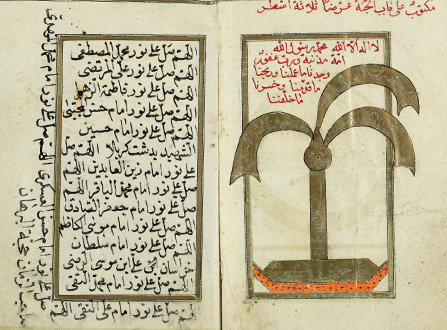| رقم الرف |
The display is devoted primarily to what is known as the Afghan Geniza, a collection of unique documents from the town of Bāmiyān that was acquired a few years ago by the National Library of Israel. Created in the 11th-13th centuries, they bear witness to the fact that in that period the historical geographical region of Khorasan, where Bāmiyān was located, was inhabited by people who spoke a variety of languages and followed several different religions. There were Persian-speaking Jews, Persian- and Turkic-speaking Muslims and probably even Christians and Zoroastrians. The greater portion of the texts, nevertheless, are connected with the life of the Jewish community in Khorasan and therefore their discovery is recognized as one of the most important finds of ancient Jewish manuscripts since the time of the unearthing of the Dead Sea Scrolls (1947-56). In the 11th-13th centuries, the historical geographical region of Khorasan occupied the territory of present-day north-eastern Iran, western Afghanistan and Turkmenistan. Over the period of almost three centuries spanned by the texts of the Afghan Geniza, the region with high cultural and economic potential was ruled by members of several dynasties from the Samanids (819-1005), under whom an incredible ascent of Iranian culture and learning took place there, to the Seljuk Turks (1038-1194) and the Khwarazmians (1177-1231). The documents include a variety of literary works both Jewish and Muslim, part of the archive of a Jewish family and another, Muslim administrative archive, but it not impossible that they came from other collections. Fragments from a commentary in a Jewish Bible, a Book of Sabbath Prayers, and even from a Mishnah - an ancient rabbinical text testify to the close connections between the Jewish community and Hebrew- and Arabic-speaking Jews from other regions.5058 Verses of a non-Judaic character in Persian, historical chronicles and even extracts from the Quran point to an educated Muslim population in close contact with the Jewish community of the region. The majority of the featured fragments from the collection of the National Library of Israel are connected with the economic and intellectual life of the Jewish community
the other section of them was created by Muslims and circulated in their milieu. For that reason, the value of this complex extends far beyond the bounds of the history of Jewish communities. The earliest part of the collection, dating from the first half of the 11th century, consists of the family archive of Abu Nasr Yehuda ben Daniel and his kin. A landowner and businessman, Abu Nasr kept records of his dealings, wrote receipts and corresponded with his family and business partners in the region. He kept several religious and liturgical text as well. The earliest known Persian legal document in the Arabic script was also found among the manuscripts in this complex. The later manuscripts, dating from the late 12th and early 13th centuries and written mainly in Persian are connected with administrative and taxation matters in both Bāmiyān and adjoining areas. Letters, promissory notes, and also lists of people and goods feature alongside legal documents. Often one sheet carries several completely unconnected documents, which is an indication of the costliness of paper in that period. Written in various languages, including Hebrew, Aramaic, Persian, Judaeo-Arabic and Judaeo-Persian, using similar ink and paper, the manuscripts display conformity to one and the same set of aesthetic requirements. The documents of the Afghan Geniza have mainly revealed previously unknown details of the cultural, economic and religious life of a flourishing but little-studied Jewish society in the east of the Arab Caliphate in the 11th-13th centuries.
|

 سجل الدخول باستخدام غوغل
سجل الدخول باستخدام غوغل
 تسجيل الدخول باستخدام فاسيبوك
تسجيل الدخول باستخدام فاسيبوك


